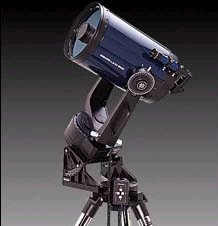
|
| Personal background |
|---|
| Hi, I am a middle aged amateur astronomer based on the east coast of Australia. In the day time I work with a software company. I am keen on deep space objects and intend to revamp my web site to reflect this interest. One area I would love to get into is studying our own sun. The only thing stopping me is the cost of a hydrogen alpha solar filter. |
| Thoughts about SETI and SETI@home |
|---|
If I did not think that there is a possibility of life beyond earth I would not be supporting the SETI Project by using years of CPU time.
When will we discover it? It is very hard to say. Space is really REALLY big and even the SETI search covers only a small portion of the sky. If we discover an intelligent signal from space, it will not change things much for me - however, I hope that it will spur on pure research in space travel. The current mechanisms for travel and communciations are far too slow. Even if we were to find a source say 5,000 light years away - there would be no point in sending a message using conventional technology. It would be 10,000 years for a reply !!!!
We need research in new commiunications and travel technologies - you know the stuff of current science fiction - only in this way will be be able to explore our universe.
I was fortunate enough to be watching my SETI display, when it received a data set and it had a very strange profile - I quickly recorded the coordinates and looked up the object. I had discovered an unusal galaxy with a pecular radio emission (Serfert Galaxy)- very exciting.
It would be nice for SETI to keep a list of coordinates of all samples for a particular member. |
| Your feedback on this profile |
|---|
| Recommend this profile for User of the Day: |
I like this profile |
| Alert administrators to an offensive profile: |
I do not like this profile |
|
| Account data |
View |
| Team |
None |
|

